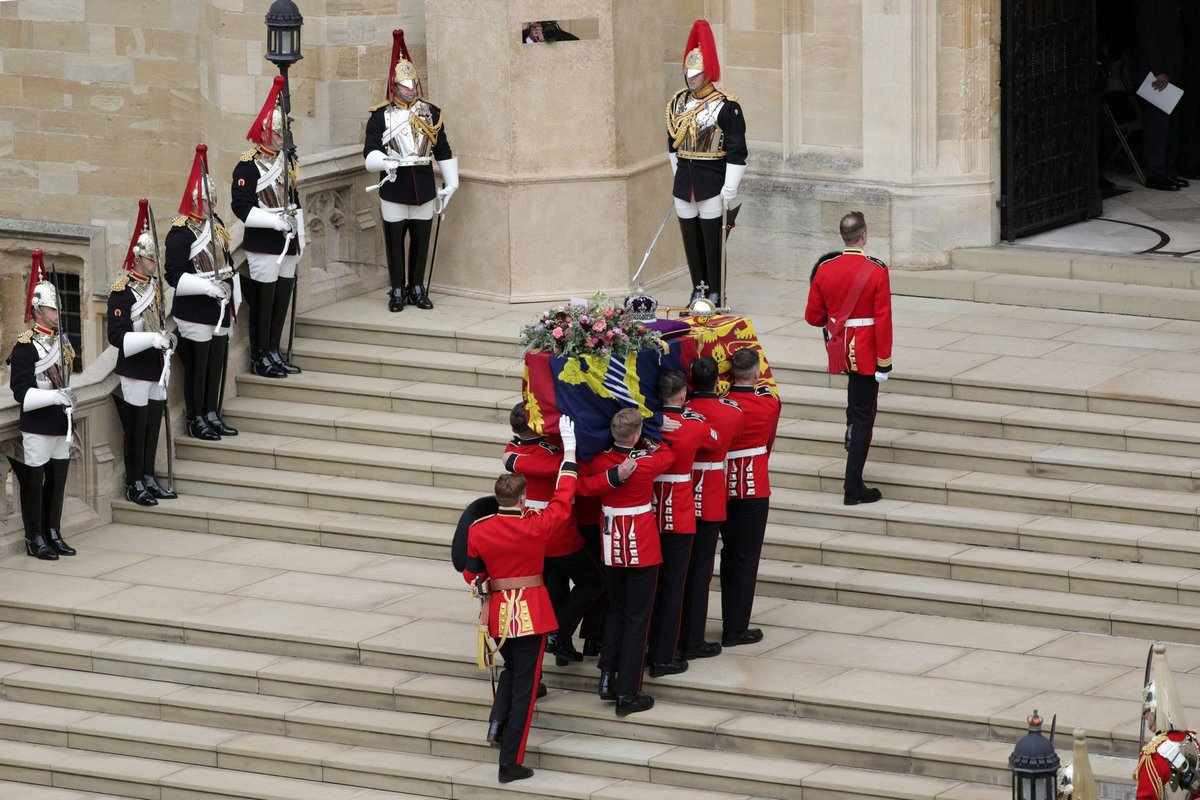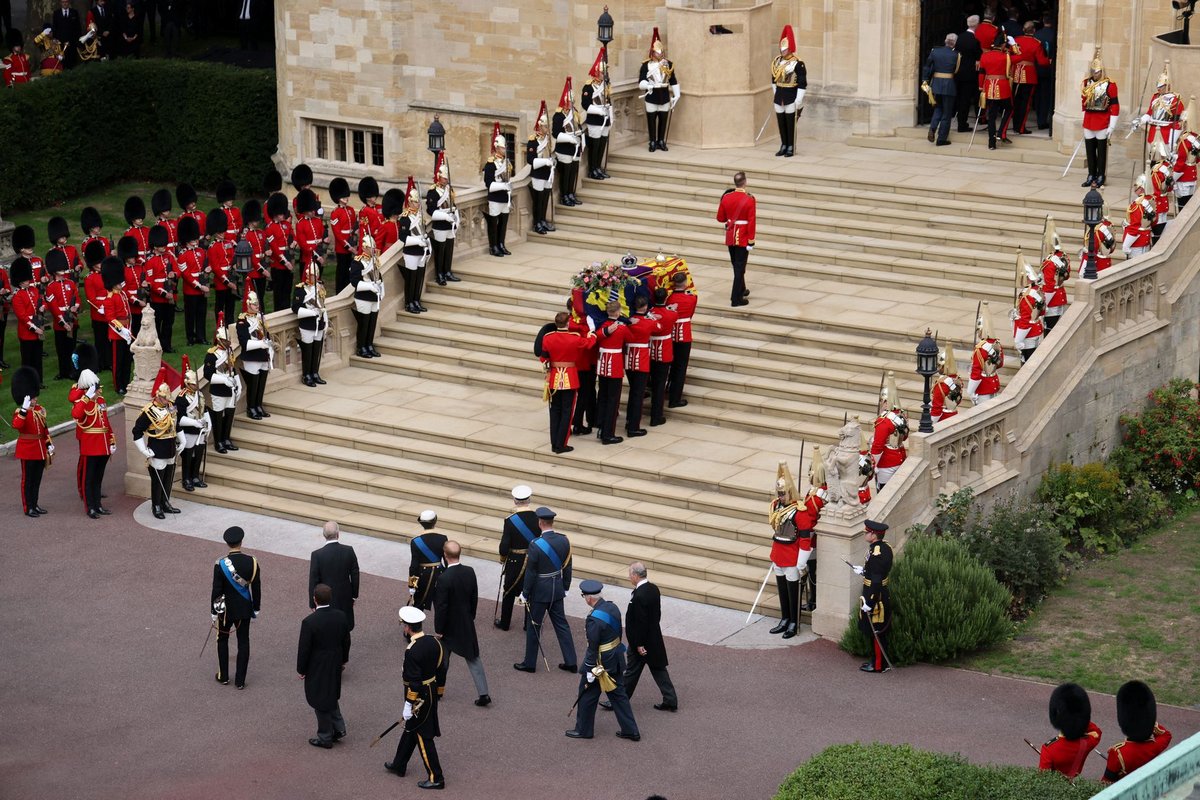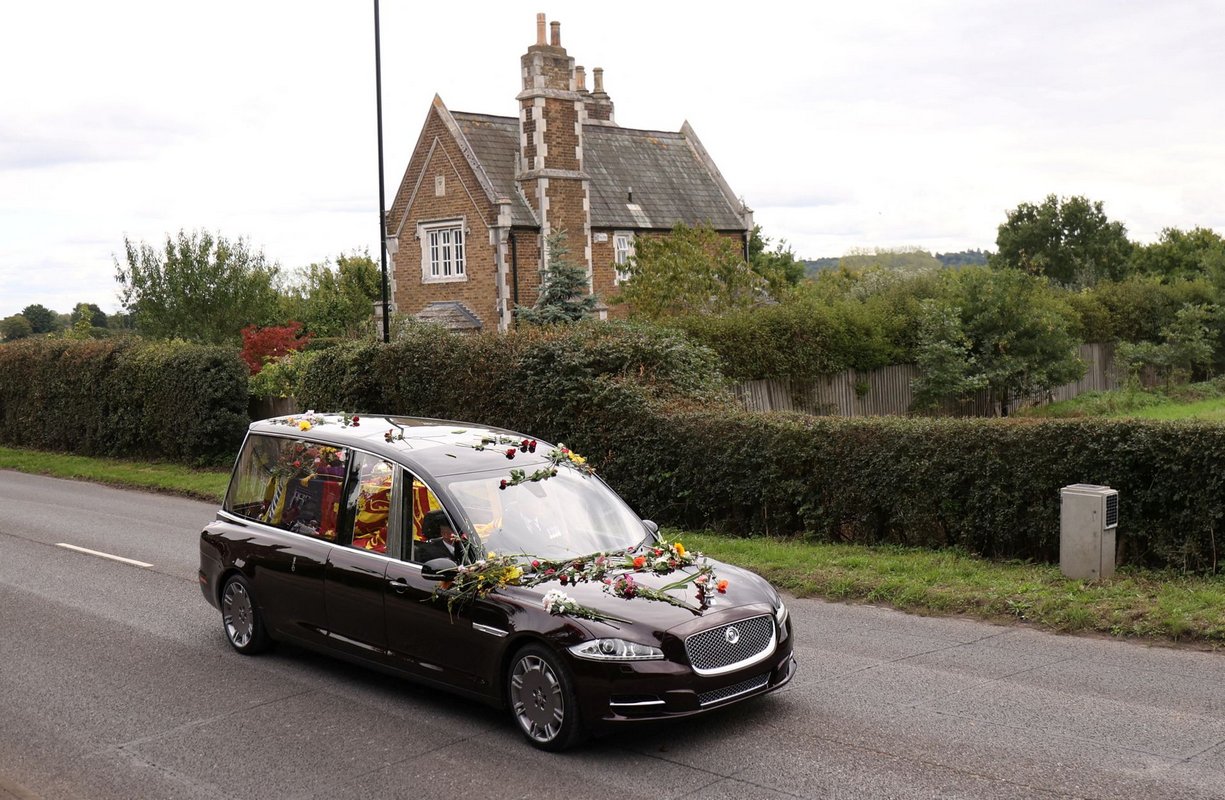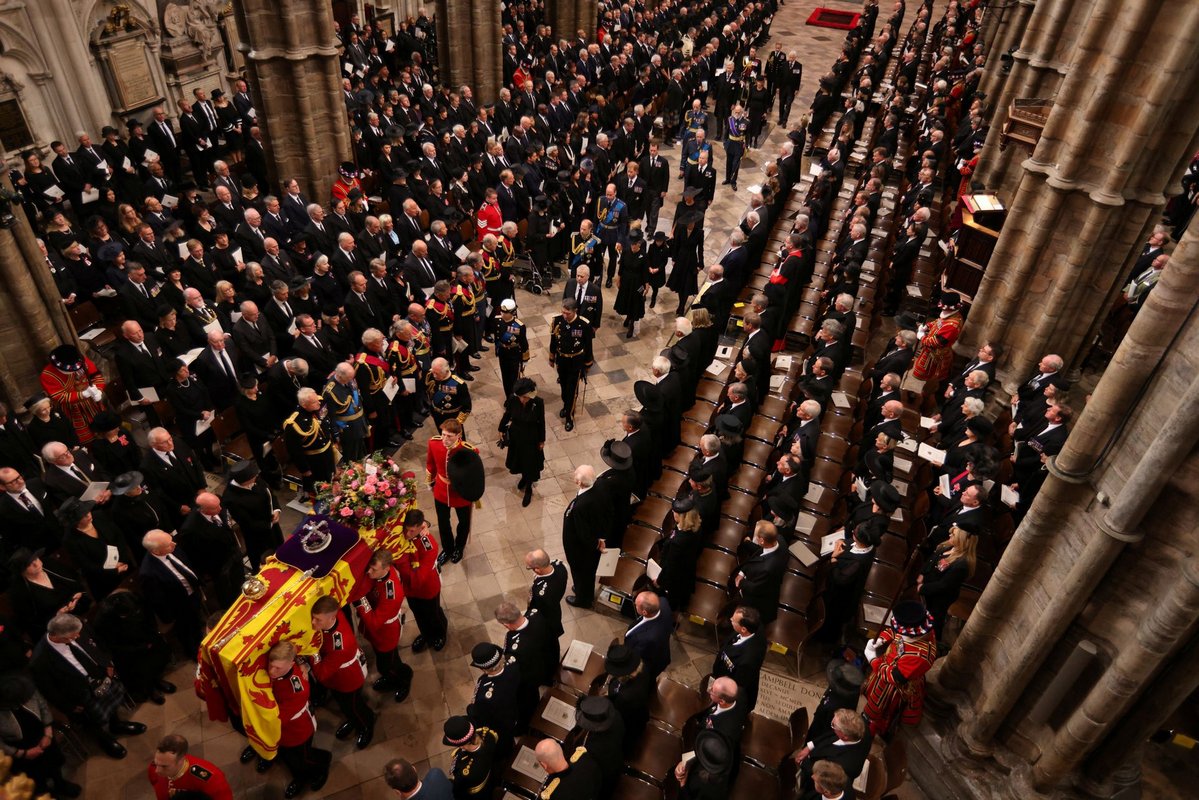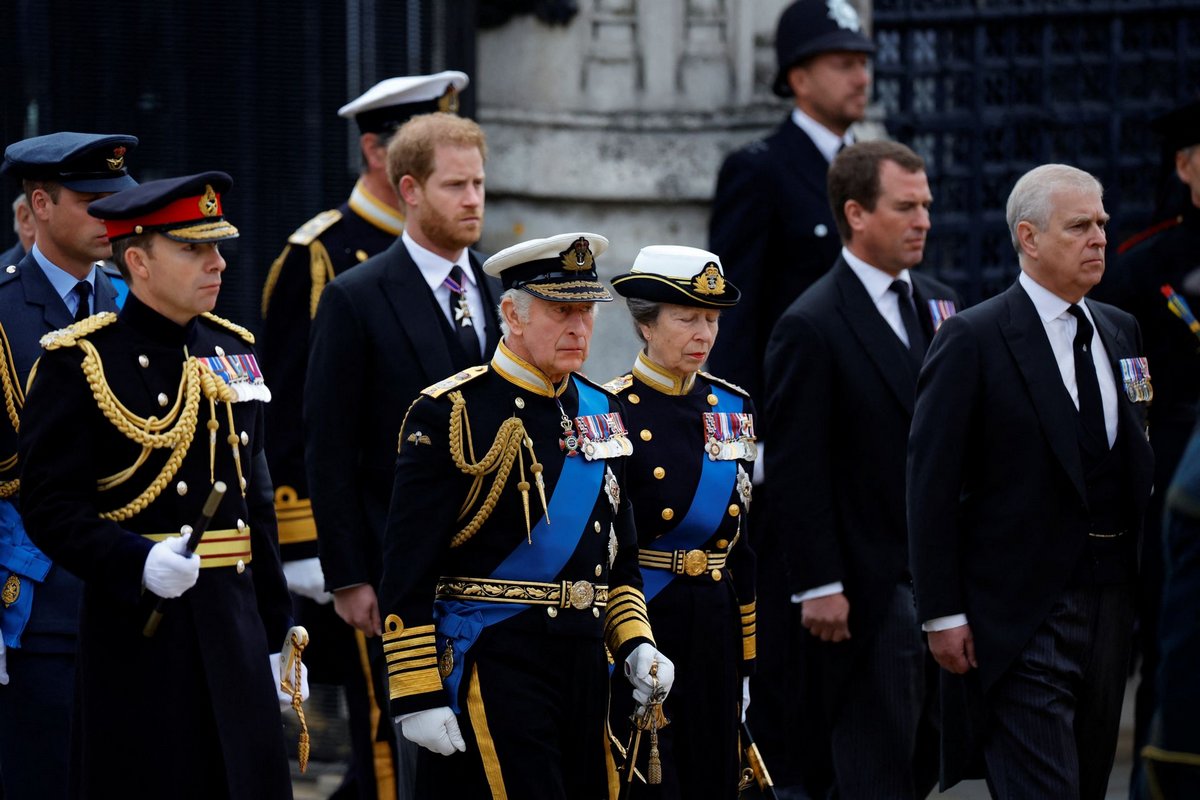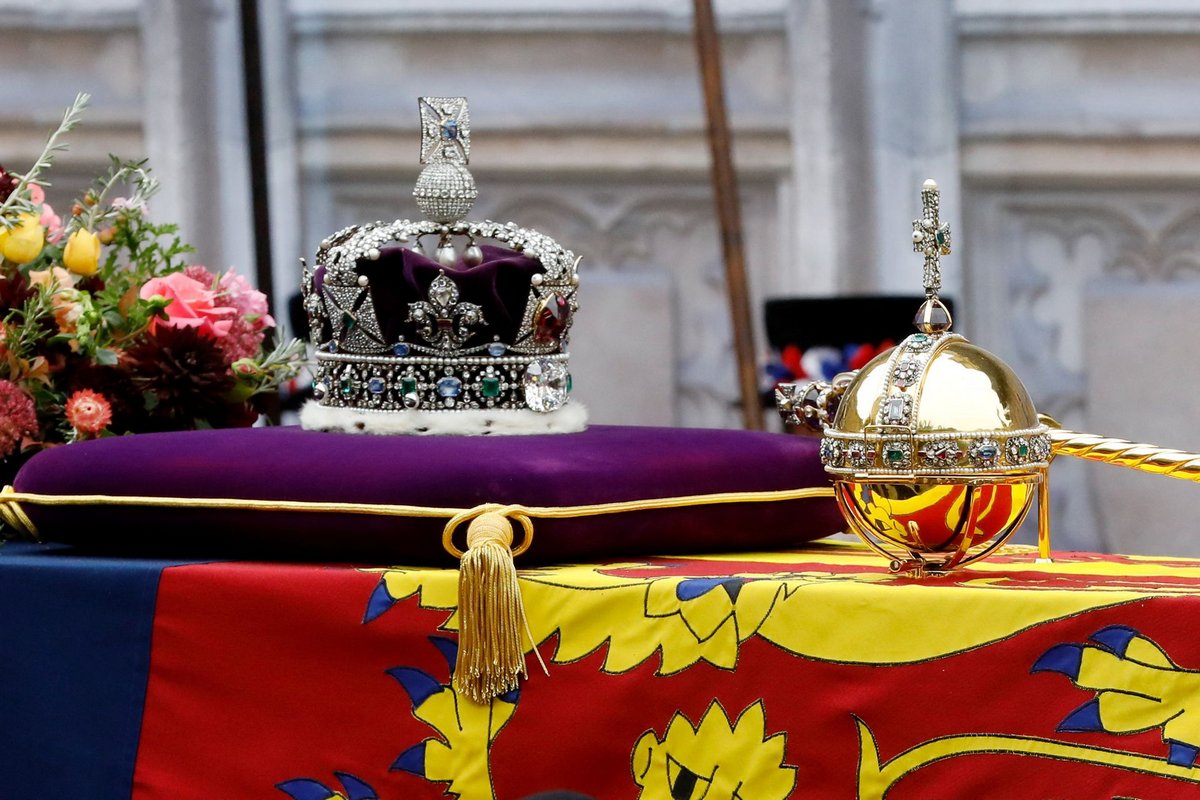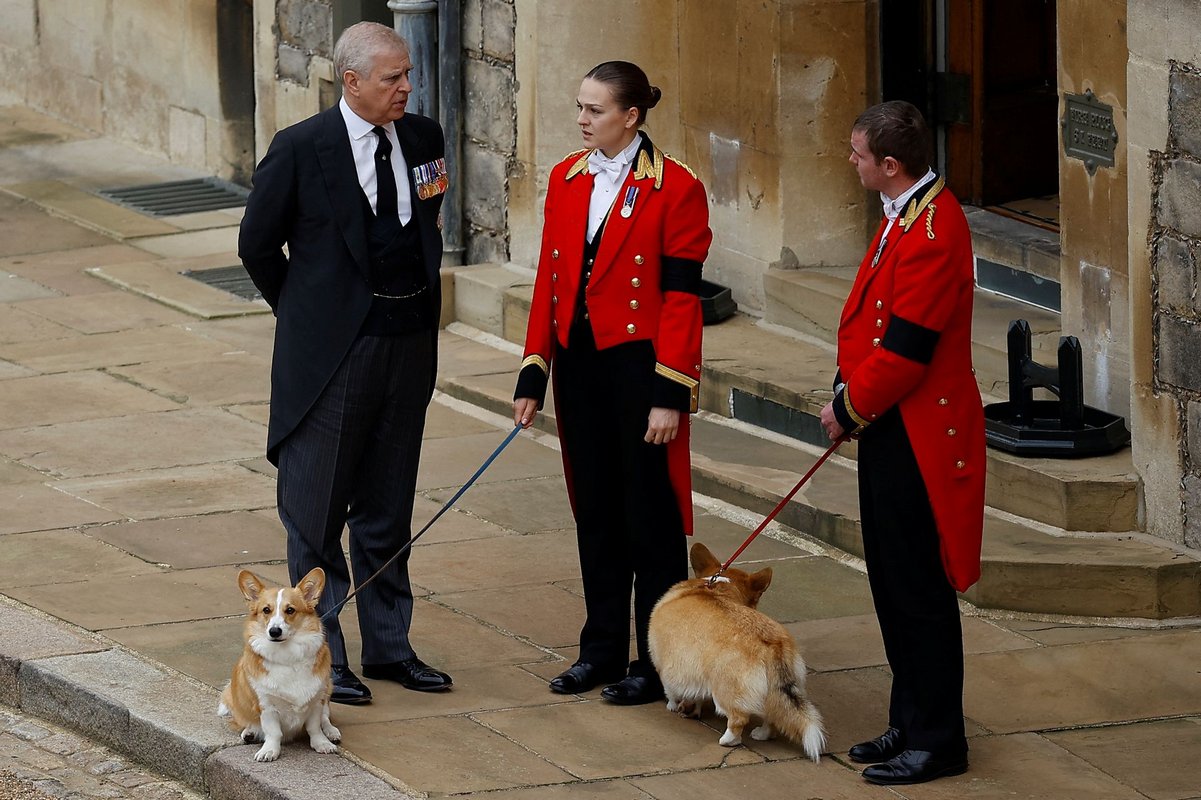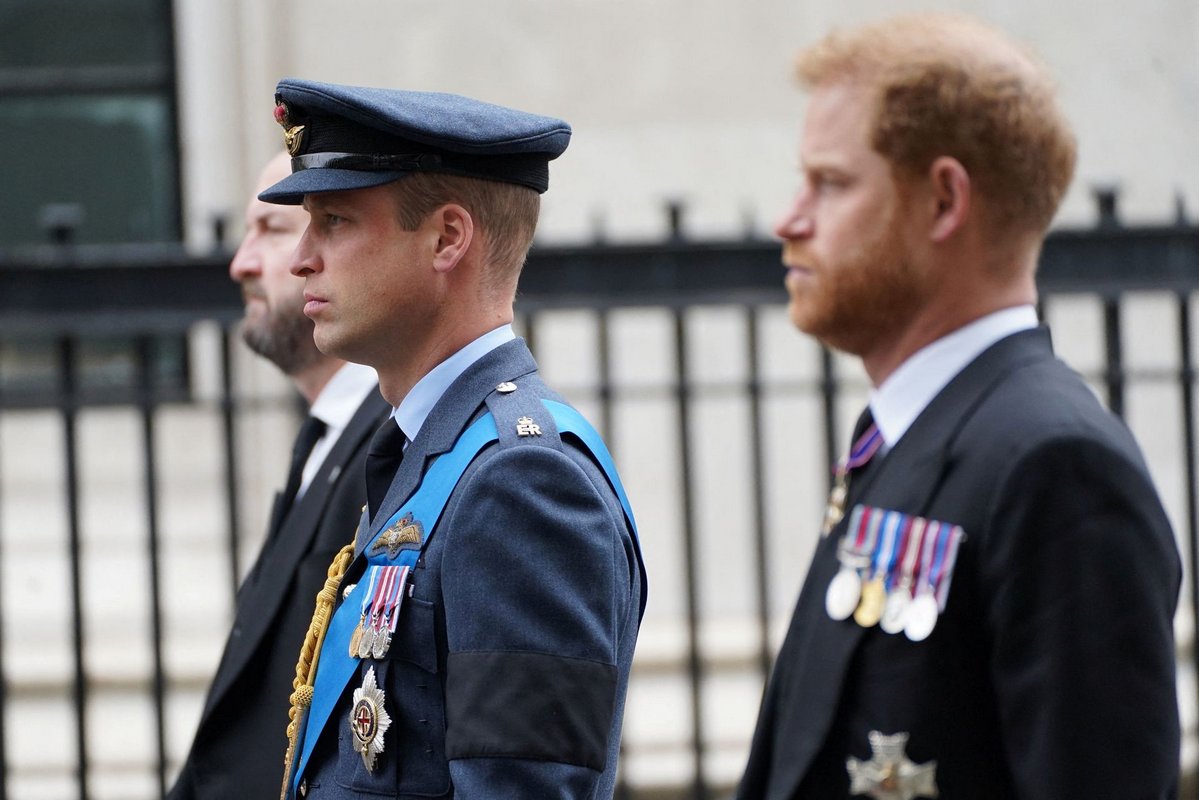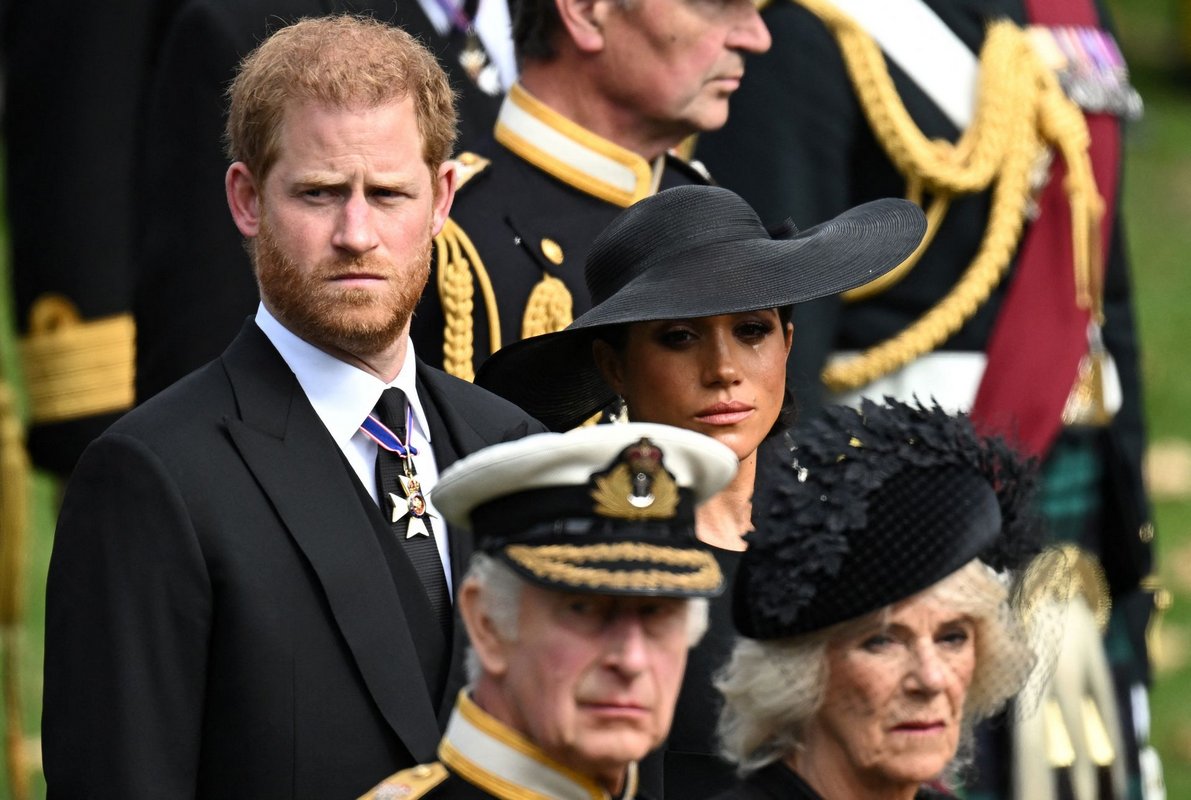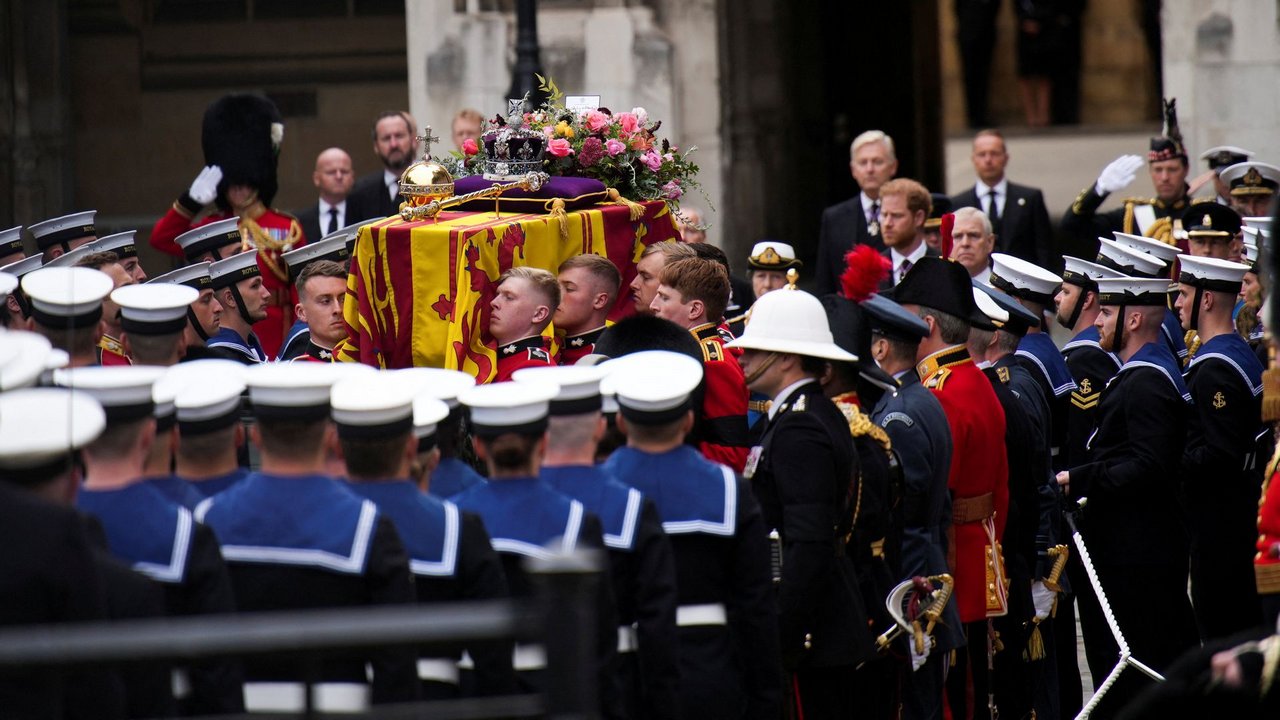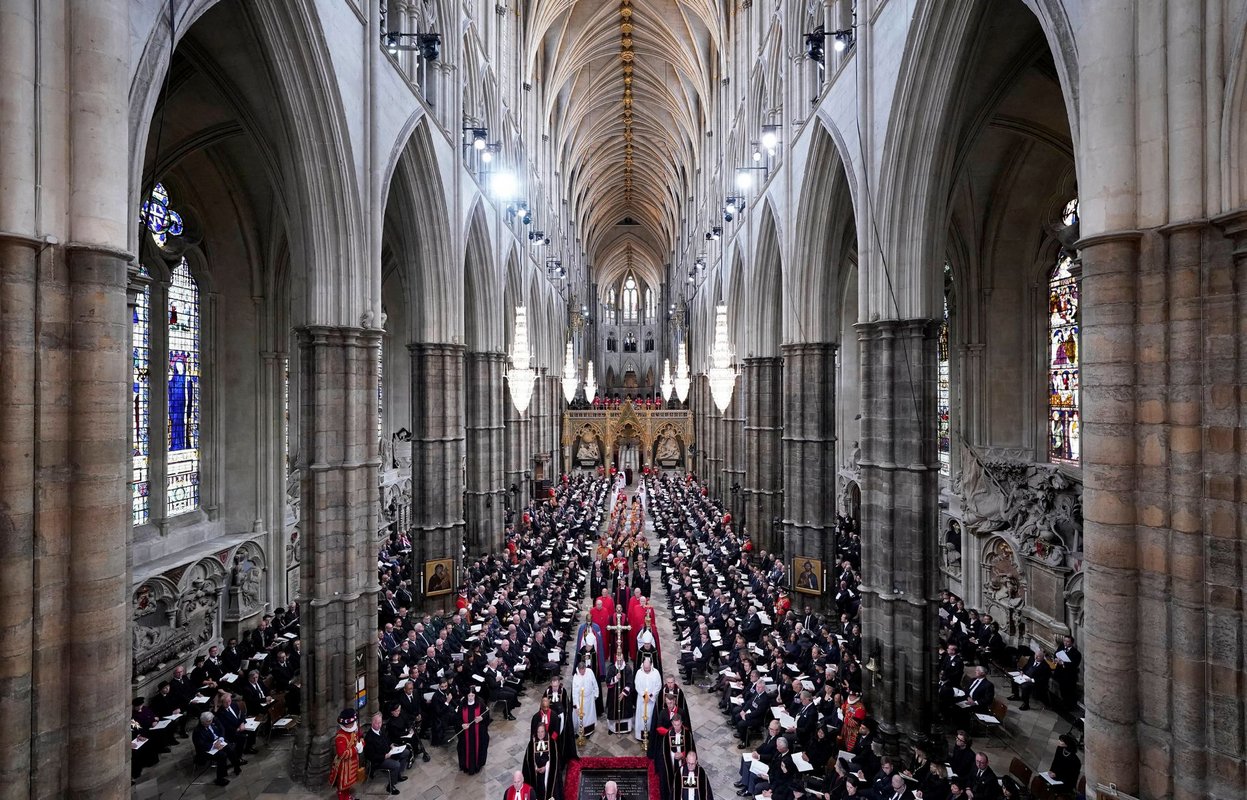Queen Elizabeth’s coffin arrived at Windsor Castle, her final resting place, on Monday after a day of matchless pageantry that drew world leaders to her funeral and hundreds of thousands of well-wishers wanting to say farewell to a revered monarch.
People lined the route her hearse took from London, throwing flowers, cheering, and clapping as it passed from the city to England’s countryside that she so loved throughout her life.
Thousands more had crammed into the capital to witness the procession and funeral, in a fitting tribute to Britain’s longest-serving monarch who won global respect during 70 years on the throne.
Inside the majestic Westminster Abbey where the funeral was held, some 500 presidents prime ministers, foreign royal family members, and dignitaries, including Joe Biden of the United States, were among the 2,000 congregations.
Music that played at the queen’s wedding in 1947 and her coronation six years later again rang out. The coffin entered to lines of scripture set to a score used at every state funeral since the early 18th century.
Justin Welby, the Archbishop of Canterbury, told those present that the grief felt by so many across Britain and the wider world reflected the late monarch’s “abundant life and loving service”.
“Her late majesty famously declared on a 21st birthday broadcast that her whole life would be dedicated to serving the nation and Commonwealth,” he said.
“Rarely has such a promise been so well kept. Few leaders receive the outpouring of love that we have seen.”
After the funeral, her flag-draped casket was pulled by sailors through London’s streets on a gun carriage in one of the largest military processions seen in Britain involving thousands of members of the armed forces dressed in ceremonial finery.
They walked in step to funeral music from marching bands, while in the background the city’s famous Big Ben tolled each minute. King Charles and other senior royals followed on foot.
The casket was taken from Westminster Abbey to Wellington Arch and transferred to a hearse to travel to Windsor, where more big crowds waited patiently. There the queen was to be laid to rest alongside her husband of 73 years, Prince Philip.
Among the crowds who came from around Britain and beyond, people climbed lampposts and stood on barriers and ladders to catch a glimpse of the royal procession.
Some wore smart black suits and dresses. Others were dressed in hoodies, leggings and tracksuits. A woman with dyed green hair stood next to a man in morning suit as they waited for the London procession to begin.
Millions more watched on television at home on a public holiday declared for the occasion, the first time the funeral of a British monarch has been televised.
Ben Vega, 47, a nurse from the Philippines standing at the back of the crowd on a stool, said he was a royalist.
“I love pageantry. I love how the British do this,” he said. “I’m from the Philippines, we don’t have this, we don’t have royal families. It’s a sad day for me. I’ve been here 20 years. I saw the queen as my second mum, England as my second home.”
‘Invincible’
Elizabeth died on Sept. 8 at Balmoral Castle, her summer home in the Scottish highlands.
Her health had been in decline, and for months the monarch who had carried out hundreds of official engagements well into her 90s had withdrawn from public life.
However, in line with her sense of duty she was photographed just two days before she died, looking frail but smiling and holding a walking stick as she appointed Liz Truss as her 15th and final prime minister.
Such was her longevity and her inextricable link with Britain that even her own family found her passing a shock.
“We all thought she was invincible,” Prince William told well-wishers.
The 40th sovereign in a line that traces its lineage back to 1066, Elizabeth came to the throne in 1952 and became Britain’s first post-imperial monarch.
She oversaw her nation trying to carve out a new place in the world, and she was instrumental in the emergence of the Commonwealth of Nations, now a grouping comprising 56 countries.
When she succeeded her father George VI, Winston Churchill was her first prime minister and Josef Stalin led the Soviet Union. She met major figures from politics to entertainment and sport including Nelson Mandela, Pope John Paul II, the Beatles, Marilyn Monroe, Pele and Roger Federer.
Despite being reputedly 5ft 3ins (1.6m) tall, she dominated rooms with her presence and became a towering global figure, praised in death from Paris and Washington to Moscow and Beijing. National mourning was observed in Brazil, Jordan and Cuba, countries with which she had little direct link.
“People of loving service are rare in any walk of life,” Welby said during the funeral. “Leaders of loving service are still rarer. But in all cases, those who serve will be loved and remembered when those who cling to power and privileges are long forgotten.”
The tenor bell of the Abbey – the site of coronations, weddings and burials of English and then British kings and queens for almost 1,000 years – tolled 96 times.
Among the hymns chosen for the service were “The Lord’s my Shepherd”, sung at the wedding of the queen and her husband Prince Philip in the Abbey in 1947. In the royal group following the casket into the Abbey was the queen’s great-grandson and future king, Prince George, aged nine.
In addition to dignitaries, the congregation included those awarded Britain’s highest military and civilian medals for gallantry, representatives from charities supported by the queen and those who made “extraordinary contributions” to dealing with the COVID-19 pandemic.
Towards the end of the service, the church and much of the nation fell silent for two minutes. Trumpets rang out before the congregation sang “God Save the King”. Outside, crowds joined in and applauded when the anthem was over.
The queen’s piper brought the service to an end with a lament that faded to silence.
Afterward, the coffin made its way through central London, past the queen’s Buckingham Palace home to the Wellington Arch at Hyde Park Corner, with the monarch and the royal family following on foot during the 1.5 mile (2.4 km) procession.
From there, it was placed on a hearse to Windsor Castle, west of London, for a service at St. George’s Chapel. This will conclude with the crown, orb and sceptre – symbols of the monarch’s power and governance – being removed from the coffin and placed on the altar.
The Lord Chamberlain, the most senior official in the royal household, will break his ‘Wand of Office’, signifying the end of his service to the sovereign, and place it on the casket.
It will then be lowered into the royal vault.
Later in the evening, in private family service, the coffin of Elizabeth and her husband of more than seven decades, Prince Philip, who died last year aged 99, will be buried together at the King George VI Memorial Chapel, where her parents and sister, Princess Margaret, also rest.
“We’re so happy you’re back with Grandpa. Goodbye, dear grannie, it has been the honor of our lives to have been your granddaughters and we’re so very proud of you,” grandchildren Princesses Beatrice and Eugenie said.
 Alghadeer TV Alghadeer TV
Alghadeer TV Alghadeer TV
